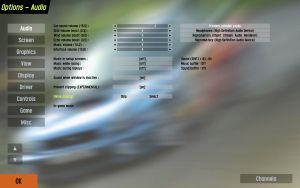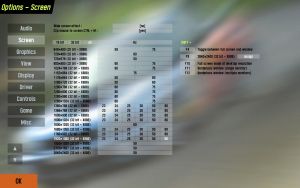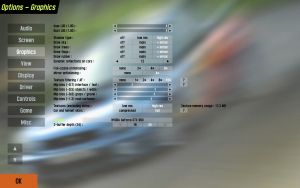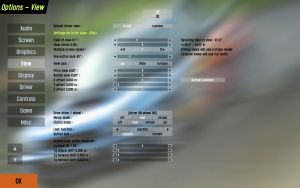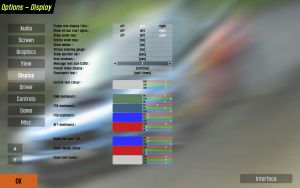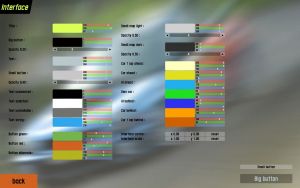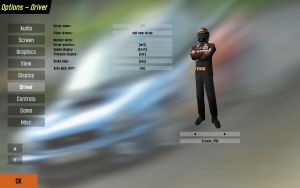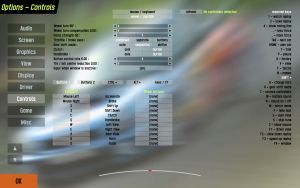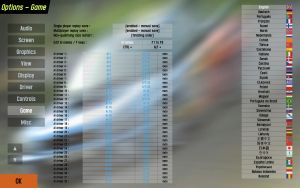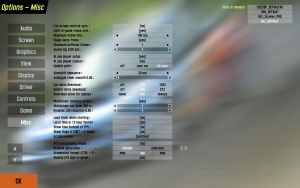Category:Options
Audio
This menu allows you to change the volume of the music and the various sounds.
Screen
In this menu you can choose the desired resolution, colour depth and refresh rate and assign key commands for different screen configurations.
Graphics
The options in this screen allow you to control the graphics quality. Fine tuning of these options can raise the frame rate or improve the image-quality. Turning off some of the options can vastly improve the gaming experience on some computers that are not quite 'up-to-date'.
View
The options in the View category will adjust camera sight in the game. Making a personal preferred setting is recommended as what you see in the game is most important. Let's go through the options available from top to bottom. Note that all view options until 'Acceleration shifts viewpoint' are stored per car, allowing for maximum customizability.
Display
Here we can change the speedo, type of mirror used, add a map of where we are on the track.
Interface
Driver
In this menu, details such as screen name, number plate text, etc. can be added. Here you can also select your driver, Male or Female, complete with helmet and racing suit and add to your car’s cockpit. Your selected screen name will always appear next to the player button, and you can also change helmet and helmet colors.
Controls
Game
Misc
Articles in category "Options"
The following 10 pages are in this category, out of 10 total.
